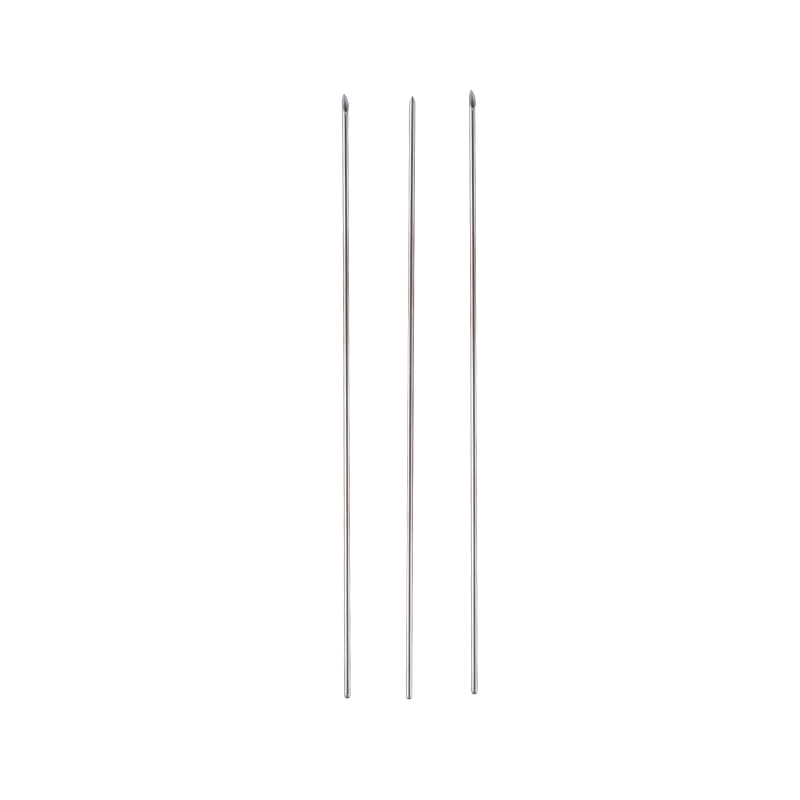+86-0577-86858771
Needles are among the more commonly used medical tools worldwide, yet their design can significantly impact patient comfort, safety, and overall treatment effectiveness. Whether in routine injections, wound closure, or specialized procedures, the specifics of needle design—such as size, shape, and tip style—play an important role in clinical outcomes. Understanding how these design elements influence patient experience and recovery can help healthcare professionals make informed choices and improve care quality.

One common needle type frequently used in clinical settings is the 3ml syringe needle. This needle is often employed for intramuscular, subcutaneous, and intravenous injections, delivering medication safely and efficiently. The size and gauge of the 3ml syringe needle are carefully balanced to ensure accurate dosage administration with less discomfort. A needle too large can cause unnecessary pain and tissue damage, while one too small might make the injection slow or difficult to administer. Additionally, the smoothness of the needle’s surface and the sharpness of its tip can affect how easily it penetrates the skin and underlying tissues. A well-designed 3ml syringe needle can reduce patient anxiety by enabling a quicker, less painful injection.
Beyond injections, needles are also critical in wound care, especially when it comes to suturing. The medical needle for stitches must be designed to securely hold and guide suture thread through delicate tissue without causing excessive trauma. These needles vary in curvature, thickness, and tip shape depending on the tissue type and the required precision. For example, in delicate surgeries or areas with thin skin, a finer needle with a sharp, precise point may be used to less tissue damage and promote faster healing. Conversely, for tougher or thicker tissue, a sturdier needle design is essential to ensure adequate penetration and suture security. The balance between needle strength and delicacy directly affects how well wounds close and how quickly patients recover.
Among different needle tip designs, the Conical Tip Needle stands out for its particular advantages in specific medical applications. Characterized by a smooth tapering point, the conical tip is designed to reduce tissue trauma during insertion. Unlike needles with cutting edges, which slice through tissue, the conical tip gently separates fibers and creates a cleaner puncture. This can be especially beneficial in procedures requiring frequent or multiple injections, such as spinal anesthesia or lumbar punctures, where reducing damage to surrounding tissue and nerves is critical. Patients often experience less post-procedure discomfort and a lower risk of complications when conical tip needles are used appropriately.
The relationship between needle design and patient outcomes goes beyond physical comfort. Well-chosen needles can also reduce the risk of infection and other complications. For instance, smoother needle surfaces are less likely to carry bacteria or cause microtears that could advance to infection. Furthermore, certain needle designs help healthcare workers maintain control and precision during procedures, reducing accidental tissue injury. This attention to detail in design ultimately supports better healing, fewer complications, and more positive patient experiences.
It’s also worth noting that the choice of needle design can impact procedural efficiency. For example, needles that glide smoothly through tissue can shorten procedure times, reducing the overall stress for both patient and practitioner. This is particularly important in busy clinical environments where patient throughput and comfort need to be balanced. Similarly, the ability of a needle to securely hold suture material without slipping can save time during wound closure, allowing medical staff to focus on other aspects of patient care.
Despite advances in needle technology, patient perceptions and experiences still depend greatly on the skill and technique of the healthcare provider. However, selecting the appropriate needle type—whether a 3ml syringe needle, a medical needle for stitches, or a conical tip needle—can provide a solid foundation for a positive outcome. Training and experience combined with thoughtful needle selection can lessen discomfort, reduce risks, and promote quicker recoveries.
In summary, needle design is a fundamental but often overlooked factor influencing patient outcomes. From the volume and gauge considerations of the 3ml syringe needle to the precision and tissue compatibility of medical needles used for stitches, every aspect matters. The conical tip needle adds another dimension by offering a less traumatic alternative for certain procedures, improving patient comfort and safety. By appreciating the connection between needle characteristics and clinical effects, healthcare professionals can better meet patient needs and support smoother healing processes. Ultimately, the thoughtful integration of needle design into clinical practice contributes to the quality of care and patient satisfaction.
Wenzhou Kangyu Medical TREATMENT
+86-0577-86858771
+86-13957709138
No. 626 Airport Avenue, Longwan District, Wenzhou City, Zhejiang Province, China
Contact Us